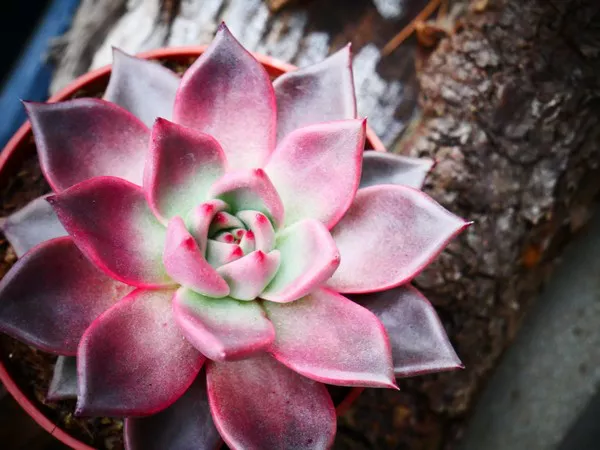Before delving into the specific signs of a healthy succulent, it’s essential to understand the fundamental factors that contribute to its overall well-being. Succulents are adapted to arid environments, characterized by limited water availability and high temperatures. As a result, they have evolved unique mechanisms to store water within their leaves, stems, or roots, enabling them to survive prolonged periods of drought.
Proper care for succulents involves mimicking their natural habitat as closely as possible. This includes providing ample sunlight, well-draining soil, and minimal water. Overwatering is one of the most common causes of succulent problems, leading to root rot and other complications. Additionally, insufficient sunlight can result in etiolation, causing succulents to become leggy and weak.
Signs of a Healthy Succulent
1. Firm and Plump Leaves: Healthy succulents typically have leaves that are firm, plump, and turgid. This indicates sufficient water storage within the plant’s tissues. In contrast, dehydrated succulents may exhibit shriveled or deflated leaves, signaling a need for hydration.
2. Vibrant Coloration: A vibrant and consistent coloration is another hallmark of a healthy succulent. Depending on the species, succulents may display hues ranging from deep greens to vivid purples and oranges. Fading or discolored leaves could indicate stress or nutrient deficiencies.
3. Compact Growth: Healthy succulents tend to exhibit compact and symmetrical growth patterns. Leaves are evenly spaced, and the overall structure is well-balanced. Excessive stretching or elongation, known as etiolation, suggests inadequate sunlight and can compromise the plant’s health.
4. Root Development: While root health is not immediately visible, it is a critical aspect of succulent vitality. Healthy roots are firm, white, and free from signs of decay. When repotting a succulent, inspecting its roots can provide valuable insights into its overall well-being.
5. Absence of Pests and Disease: A healthy succulent is typically free from pests such as aphids, mealybugs, or spider mites, as well as diseases like fungal infections. Regular inspection and prompt treatment are essential for preventing infestations and maintaining plant health.
6. Active Growth and Propagation: Succulents that are actively growing and producing offsets or pups are generally in good health. This indicates that the plant is receiving adequate light, water, and nutrients to support new growth. Healthy succulents are also more likely to thrive when propagated through division, cuttings, or leaf propagation.
7. Resilience to Stress: Healthy succulents demonstrate resilience to environmental stressors such as temperature fluctuations, drought, or transplant shock. While they may show signs of temporary stress, such as leaf curling or color changes, they are quick to recover once optimal conditions are restored.
Maintaining Succulent Health
Ensuring the continued health and vitality of succulents requires proactive care and attention. Here are some essential tips for maintaining succulent well-being:
1. Provide Adequate Sunlight: Most succulents thrive in bright, indirect sunlight. Place them near a south or west-facing window indoors, or in a location with partial shade outdoors. Rotate the plants regularly to promote even growth.
2. Use Well-Draining Soil: Succulents prefer soil that drains quickly and does not retain excess moisture. A blend of potting soil, sand, and perlite or pumice provides the ideal growing medium. Avoid heavy or water-retentive soils, which can lead to root rot.
3. Water Wisely: Succulents have low water requirements and are susceptible to overwatering. Allow the soil to dry out completely between waterings, and water sparingly during the winter months when growth slows. Always water the soil directly rather than overhead to prevent fungal issues.
4. Monitor for Pests and Disease: Regularly inspect succulents for signs of pest infestation or disease. Remove any affected plant parts promptly and treat with appropriate organic or chemical solutions if necessary. Quarantine new additions to prevent the spread of pests.
5. Avoid Extreme Temperatures: While succulents are generally tolerant of temperature fluctuations, they may suffer damage if exposed to extreme cold or heat. Protect them from frost and excessive heat by bringing them indoors during inclement weather or providing shelter.
6. Fertilize Sparingly: Succulents have modest fertilizer requirements and can thrive without regular feeding. Apply a diluted, balanced fertilizer during the growing season, following the manufacturer’s recommendations. Avoid excessive fertilization, which can lead to salt buildup and damage roots.
7. Repot When Necessary: As succulents grow, they may outgrow their containers or deplete the nutrients in the soil. Repotting allows for better drainage, aeration, and root development. Choose a slightly larger pot with drainage holes and refresh the soil as needed.
Conclusion
Healthy succulents are a testament to effective care and attention to their unique needs. By understanding the signs of succulent health and implementing proper maintenance practices, enthusiasts can enjoy these charming plants for years to come. From vibrant foliage to resilient growth, a thriving succulent brings beauty and vitality to any environment. With diligence and care, anyone can cultivate a collection of healthy succulents that will delight and inspire.\


